One of the most common questions I get from friends, family, random emails in my inbox is about the choice of fibre for clothing. I had it again the other day so I thought I would write about my thought process behind my standard answer to this. The question usually goes something like this:
“Is this <insert fibre/fabric> sustainable?
“I don’t know which fibre to choose for project X. Can you help?
“I think <insert fibre/fabric> is sustainable. Where can I buy it?
My answer always involves two elements: 1) there is no such thing as the most sustainable fibre (refer to my blog post about the most sustainable textiles here). 2) I would choose functionality and use over fibre sustainability.
I actually like getting these kinds of questions because it shows that individuals want to think about what they are using to sew. Unfortunately, for me to give an accurate answer tends to put people off or put sustainability in the “too hard basket” – because guess what? There is no black and white answer and I would be lying if I told you that there was.
Why the choice of fibre is not my top priority
Update 13 September 2020: the way I sew is not the biggest action I can take as an individual against climate change. Transport and diet are far more important. See Grace’s blog post here (she’s an environmental scientist that cares about data and truths).
Fashion Revolution #30wears challenge
There are alarming statistics about how little we wear our individual items of clothing. Whilst we might think it is more applicable to the non-sewist than sewist, I think we’ve all had our share of sewing fails that don’t make the 30 wears cut. But really, the most sustainable garment is the one that’s already in your closet. Having said that we know it’s not practical to buy or make nothing. In which case I’d suggest the love-it-use-it test is most important. After all, what’s the point making something super mindfully from a sustainably produced fibre if it’s not suitable for the project? You probably won’t get much joy out of the end result.
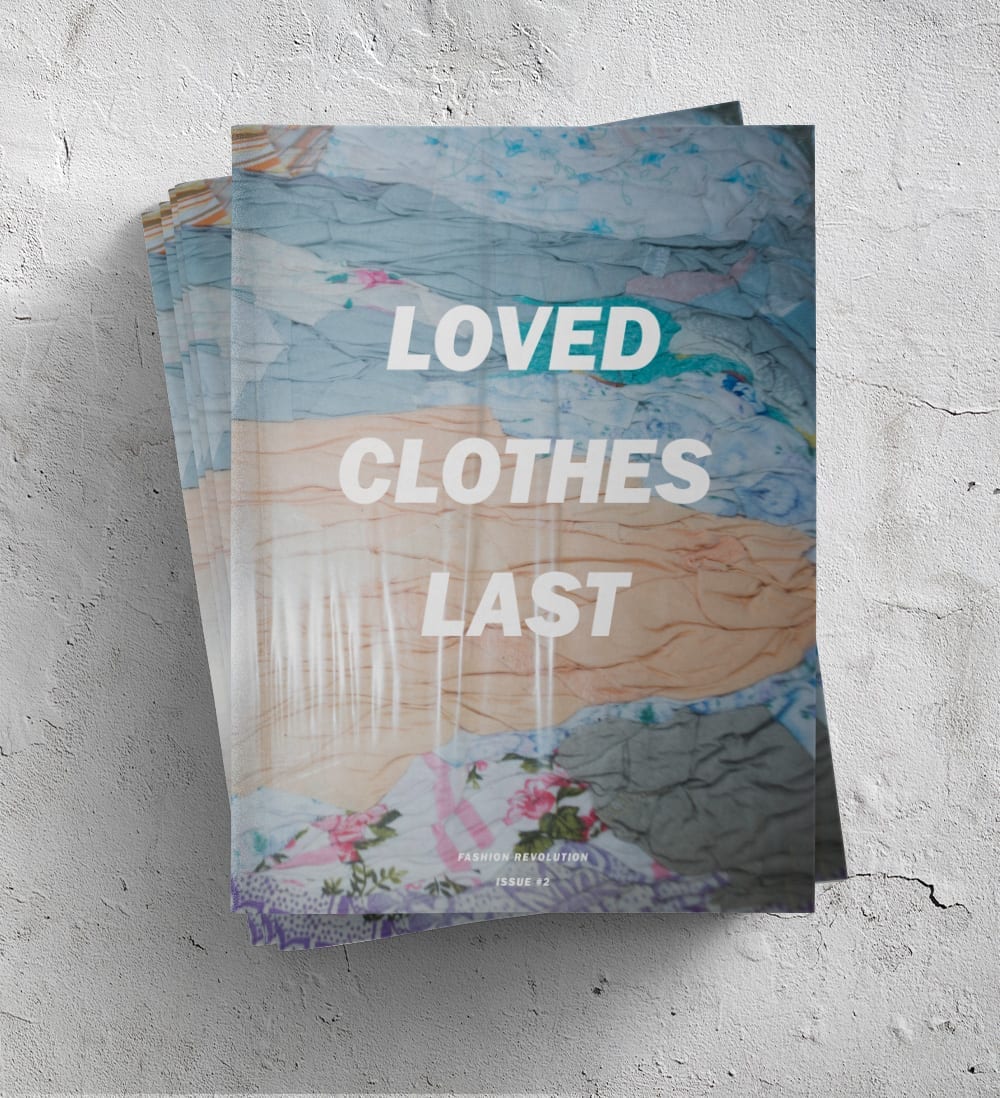
As an aside, a friend of mine asked me just the other day about fleece alternatives for a dinosaur beanie requested by her 5-year-old. My answer: if you already have the fleece, he likes it and promises he will wear it, then just use it! Truthfully I couldn’t think of anything else to suggest given the circumstances. In terms of fabric, for example, cotton jersey/interlock would be too floppy. Too much interfacing would make the beanie too stiff. Wool is probably going to be scratchy on the forehead. You get the idea.
There is no right answer when it comes to “sustainable” fibres
Whilst some fibre types in the same family lend themselves to comparison (e.g. viscose vs lyocell), for others it would be like comparing apples and sushi (e.g. cotton vs leather).
Synthetics are one category of fibre that some purists love to hate. I’ve said it before and I’ll say it again – when I’m riding a bike I’ll take a polyester raincoat any day over a cotton canvas one any day. It’s lightweight, more windproof and dries quicker in case of heavy rain.
Also spare a thought for if you ever wear or sew with jersey. If you want stretch, then you need the nylon (elastane) to ensure you have some recovery (i.e. so it doesn’t stretch out and stay that way). But Kate! What about microplastics? you say. Yes, I know there is a microplastic problem and I’ve decided to keep my clothes for longer and wash them less than avoid synthetics completely. But that’s my personal opinion, it might not be yours.
Finally, if you’re buying something “sustainable”, the term generally applies to the way that something is manufactured. How long you choose to keep/use something, care for it and then dispose of it has a big impact on the sustainability profile of that item.
Individual piety doesn’t change the world
That’s Clare Press (sustainable fashion journalist) quoting Australian economist Richard Denniss in her book “Rise and Resist”. It’s not just Richard in this camp – Extinction Rebellion co-founder Clare Farrell also said the same thing to me once. But if it is true that individual actions don’t matter, then why do we even bother? Because counterintuitively, the opposite is true. If we ALL engaged in some kind of collective action, that has an impact. But we can’t collectively engage if individuals aren’t engaged right? A bit chicken and egg in my mind.
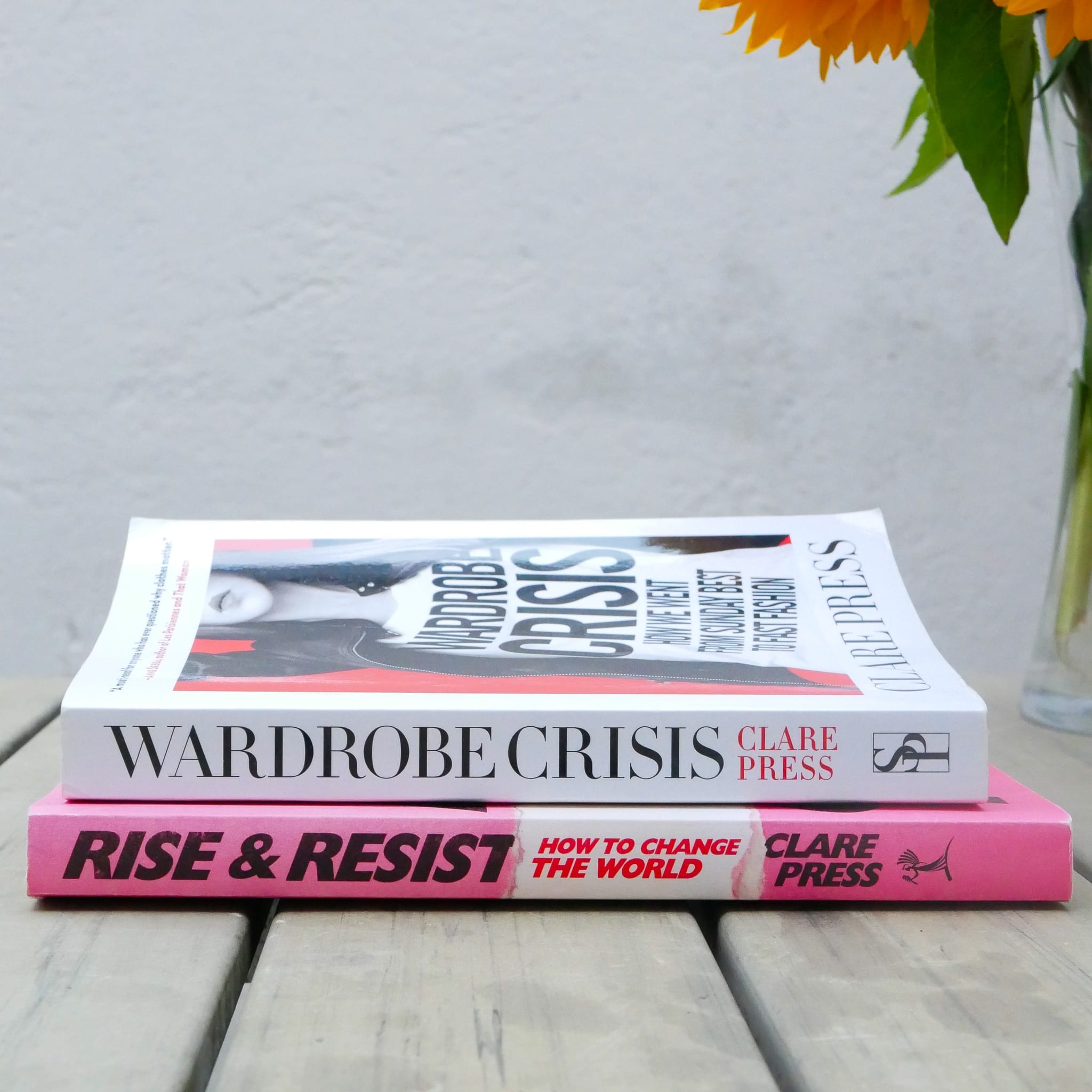
The flip side – why you might want to care about your choice of fibre
Fibre choice may be one way that you choose to engage in sustainability. Maybe you don’t want to use thrifted fabric or you can’t find anything you like. Maybe you prefer to buy the prints that you like and use up every scrap in various projects. Whatever the reason, you want to buy new fabric – so you think you should buy better. Great! Then choose something that is produced more sustainably if you can – bearing in mind that fibre sustainability is not clear cut.
What do I mean by this? Well, in the absence of any widely accepted fibre sustainability ranking, you need to choose what you are passionate about. If you want to be anti- plastics, avoid synthetics. Worried about pesticide use? Choose organic. Does it all seem too hard? The fashion industry has come up with some rankings and indexes on the sustainability of fibres. But these should be treated with caution.
A note on using fibre sustainability ranking lists and indexes
The benchmark that I have found easiest and clearest to understand to laymen like you and I was developed by a consultancy called Made-by. Whilst the firm doesn’t exist anymore, as recently as last year I still saw it being quoted as a source of info. But the benchmark is not without problems. Besides being quite a few years old (I want to say 2012 but I’ve lost the original file now except the picture), the basket of measures on which is based is determined by the consultancy – so entirely subjective.
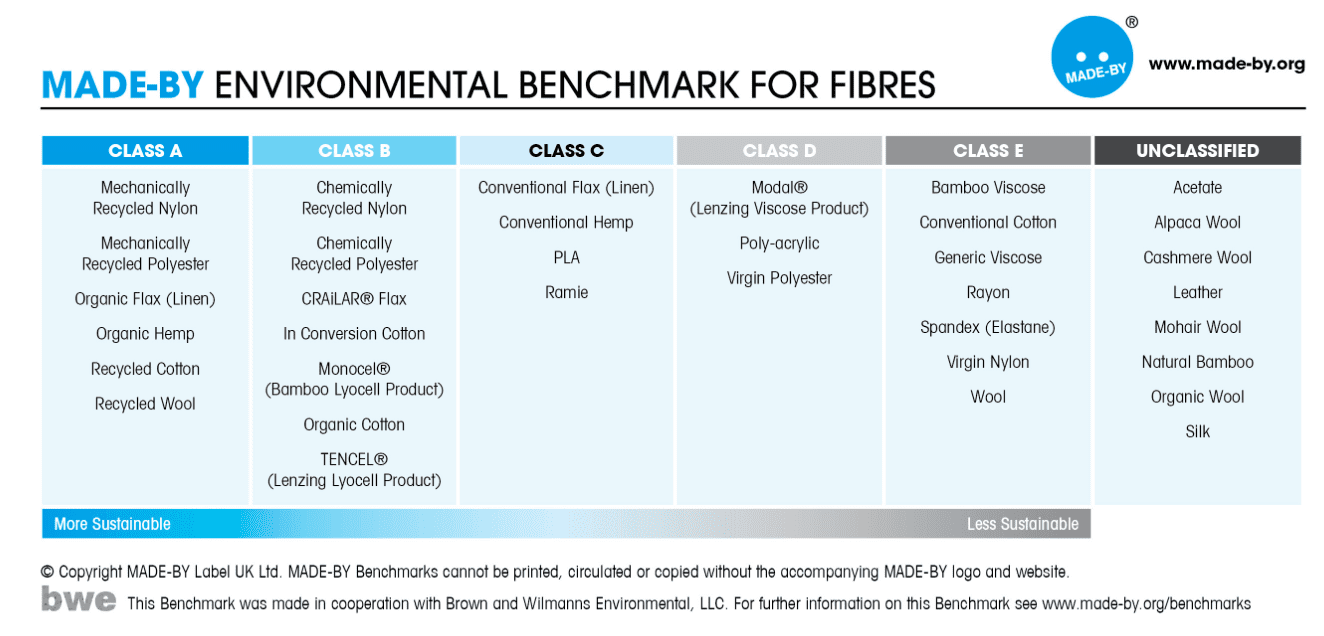
Another index is the Higg MSI. This looks at the impact of materials production. In contrast to the Made-by list, Higg will tell you that linen has a higher impact than cotton, with viscose having a lower impact than both linen and cotton. This goes against all kinds of conventional sustainable fashion wisdom which tells you that linen is preferable to both cotton and viscose.
The point is that depending on what measures you use and what you perceive to be the real problem areas (do you think the environmental impact of agricultural is worse than extracting oil from the ground?), what is sustainable to you is going to be different to what it is for me. At least by making a choice, you’re sticking with the principles that you believe in.
I care about my choice of fibre but it’s not my top priority
I love clothes and fabric, so fibre choice is one way I try to engage in living a more sustainable life. But I have a lot of clothes. So it is just as important (if not more) to me to get the best use out of them, which means thinking about use. Ultimately it is just personal choice. There are so many things I could better in terms of an eco-friendly life (transport, diet) that I don’t think it’s worth being overly stressed about fabric choice!
Want to think more about the most sustainable textile debate? Click here to read my interview with Dr Mark Sumner from Leeds University on what is the most sustainable textile to buy. Spoiler alert: there isn’t one.
PIN FOR LATER
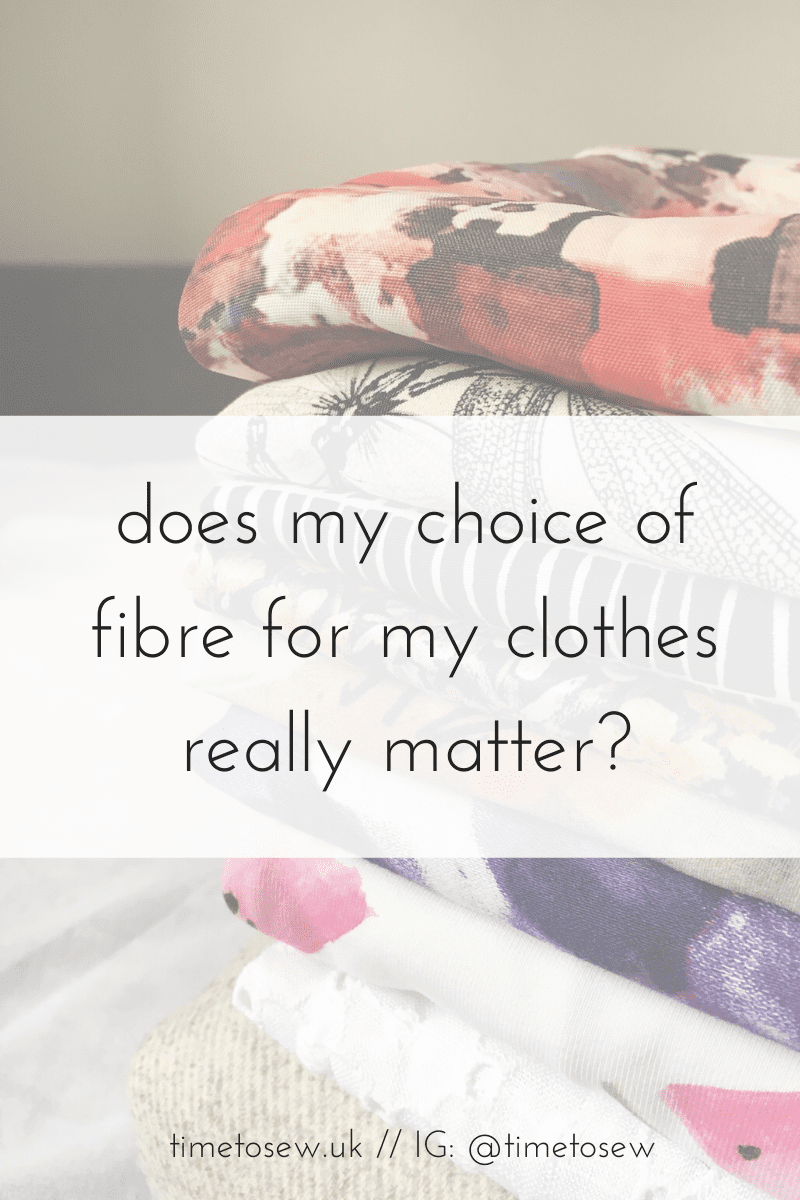

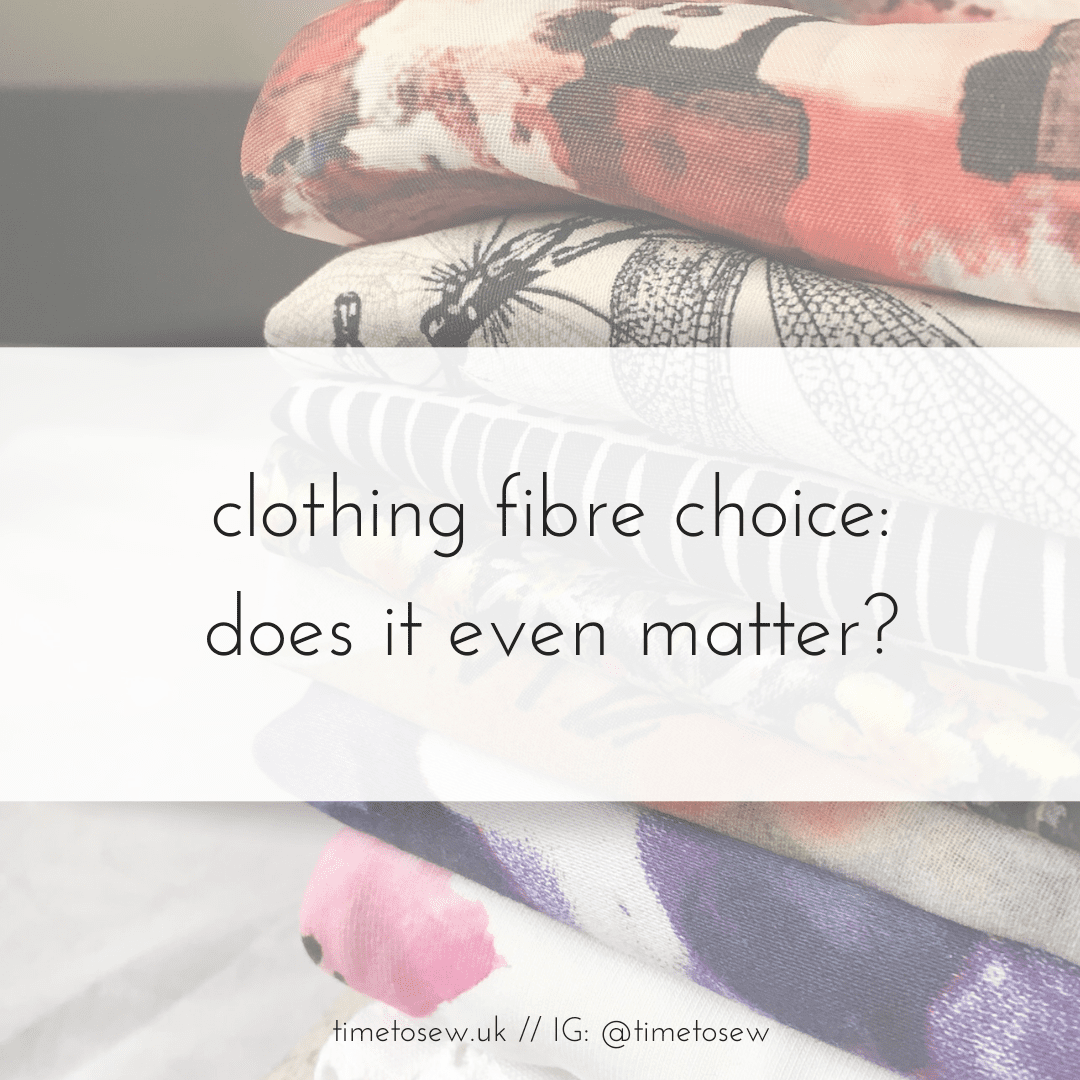
12 comments
Some good food for thought in this post! I’ve really found the information you share in your posts helpful as I figure out how to move forward with sustainability in my own sewing.
Thanks Anna for your kind comment. I think we’re all in a bit of a muddle when it comes to sustainability and trying to work our way through it, no easy answers!
I think that this is a pretty interesting topic, especially as I personally am trying to move away from plastic fabrics in my newer garments, but the reason for that is because I don’t have a lot of clothes. My clothes therefore get washed more often, which means that if they’re polyester that releases a lot of micro plastics in the world. A person with more clothes than me will need to wash their clothes a lot less, so they’ll be creating less of an impact.
I think that this might be a way to figure out what fabrics to use, how often is it going to be worn and how often will it be washed. A coat, for example, isn’t going to need to be washed as much as a tight fitting T-shirt. Clothes for adults wont get washed as often as clothes for children. Putting a bit of thought into what use the item will have helps you make educated choices, and using what you’ve already got is always going to me more ‘sustainable’ than buying new.
For sure, the most sustainable items are the ones already in your wardrobe. I have a ton of clothes from a lot of sewing in previous years and I also like a little bit of vintage every now and again. I don’t sew a lot of clothes these days but when I do they tend to be less fitted. Partially because of the washing actually – less sweaty and more ability to layer. My kids give me enough washing to do as it is!!!
Very well put again Kate! Personally I tried to take stock of my habits and see where I could make changes that came natural to me so I knew I could stick to them. Taking really good care of what I have was one of them, instead of thrifting clothes (because my size is harder to find and I’m not much of an alterations person).
Thanks Wilma, sustainability is a bit like going on a diet sometimes eh? If you can’t stick with it there’s no point in doing it. Thrifting is not for me either, I have no patience at all for any kind of clothes shopping experience. (but I do have patience for thrifting puzzles and books etc. for my kid). I don’t mind alterations if I made the clothes in the first place, but wholesale refashioning I find also pretty painful! My latest thing is wearing my husband’s unwanted clothes. They are very oversized on me so were good for pregnancy, and I don’t yet fit into all my regular clothes!
Thank you, as ever, for a thoughtful and informative post! You are an inspiration!
Thanks Margaret, that’s really kind of you to say!
I too always enjoy reading your posts Kate! Provocative in a satiating way 🙂 I actually HATE polys so not using them is easy – they feel cold to the touch but they make you sweat like a horse at the finish line. Having said that I do wear active wear when I’m being active (exercise classes, cycling etc) and celebrate those special fabrics for their unique properties. I do tend to keep them for YEARS which brings us to your sustainability discussion re how often and long you’ll have and wear a garment. My experience as a (hopefully sustainably conscious) sewist is that the more expensive the fabric I use, the more inclined I’m going to be to making it work. Wearing it, caring for it and putting up with any small fitting issues that may be mildly annoying. If I’ve used $40/m. triple silk I’m darn well going to wear that thing and I’m going to sew it carefully using robust seaming techniques that will insure its survival through many washes. There are so many pieces to the sustainability puzzle as you say – not just, “what is its fibre content?” Thanks for a Friday morning think!
Hi Kathleen! Long time no hear, I tried to comment on your blog a couple of times awhile back but I think comments are disabled. Anyway, thank you for reading as usual. I love your analogy about polyester and sweating like a horse. Ha. I actually only have 1 full polyester me made – a bright red Grainline Willow dress I made some years ago. I wore it a grand total of once this year for the Dressmakers Ball event (i.e. an excuse for sewists to dress up). Otherwise it’s been relegated to winter, with a turtleneck and tights underneath so sweat stops being an issue. My old RTW knits are another matter though – a LOT of acrylic. Cotton sweaters/viscoseblends just aren’t warm, wool itches … I am not winning on that front!
Fibre choice is a starting point for me. I bought quite a bit of polyester when I first started sewing (still in my stash), because I was new to it all. Should I sew them up, knowing what I do now? I don’t have problems wearing poly, and still like those fabrics, so I’ve decided I should, instead of (1) someone else sewing them up and wearing and washing them like I would anyway; (2) may not even get made up, and become part of another stash elsewhere; (3) worst still, end up in landfill…. As you say, the most sustainable is what’s already in our wardrobe/stash. I don’t buy more poly now tho, except activewear and the few % incoporated into stretch cotton.
I had a load of quilting cotton and non drapey lawns which I would probably never buy now. But, like your polyester fabrics I still keep them and use them where I can (eg quilting, accessories etc) because I have it already and I have space. New stuff I try to buy better, but you know as well as anyone that this year I have been all about linen and basically bought and sewn nothing else!!!